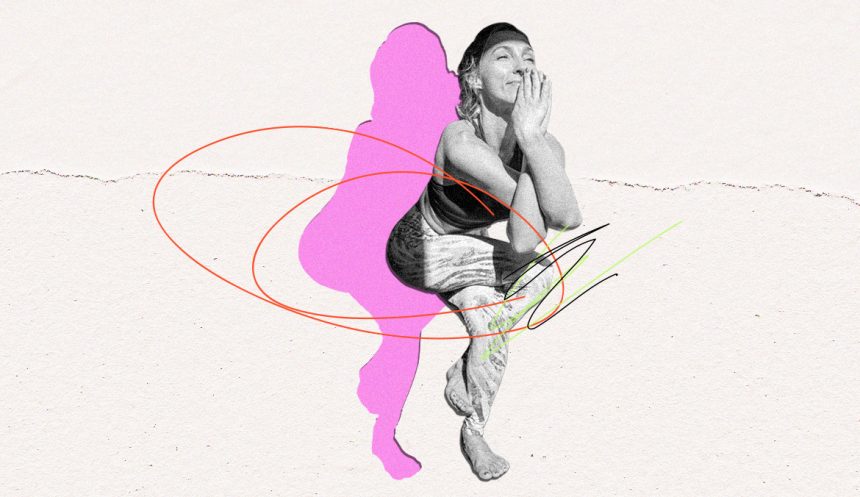Foundation of Yoga: The Eagle Pose
There are certain foundational yoga poses that exemplify yoga as a practice, and eagle is one of them. This standing pose is unique in that it has so many different stages, from the nested version—where you curl in tight—to letting your eagle soar away as you come out of the posture. At its core, eagle pose may seem like just another one-legged balance asana, but it’s actually a journey toward freedom.
Author and yoga teacher Alison Zak describes the significance of the eagle yoga pose, garudasana, in her recent book, Wild Asana: Animals, Yoga, and Connecting Our Practice to the Natural World. The pose is associated not only with an animal but also with the god Garuda. Garuda is described as having a golden body, white face, red wings, talons, and a curved beak. In Hindu mythology, he symbolizes integrity as he carried the nectar of immortality in his beak without drinking a drop.
There are three distinct parts to the pose. The first involves remaining upright. In the second part, we curl into the nest of our legs, engaging the abdominals. The final part is when we spread our wings and “fly away” from the pose. Eagle can be divided into upper and lower halves and integrated into other yoga asanas, such as the warrior poses or half moon.
Benefits of Eagle Pose:
- Balance improvement: Eagle pose challenges your balance dynamically as you move through its stages, enhancing concentration.
- Leg strengthening: This pose lengthens outer hips and glutes while strengthening inner thigh muscles.
- Upper-body stretch: The arm position provides a deep stretch in the back and shoulders.
- Agility improvement: Eagle pose requires agility as you weave different parts of your body together.
- Breath control: Moving between the upright and curled-in versions of the pose is an opportunity to practice steady breathing.
How to do Eagle Pose:
- Start in chair pose with your feet together, knees bent, and weight in your heels.
- Lift your left leg and cross it over your right, then stack your thighs. Tuck your left foot behind your right ankle if possible.
- Inhale your arms into a wide T-shape, then cross the opposite arm on top. Bend at the elbows and connect your palms together.
- Curl your spine forward, touch your knees with your elbows, maintaining a broad chest.
- Hold for 5 breaths, then return to upright eagle and untangle your legs and arms to come out.
How to modify Eagle Pose for beginners:
- Kickstand your bottom foot or place your toes on a block for added support.
- Give yourself a hug or press your forearms together if wrapping the arms is challenging.
Quick tips for mastering Eagle Pose:
- Keep your weight in your standing heel to maintain balance.






